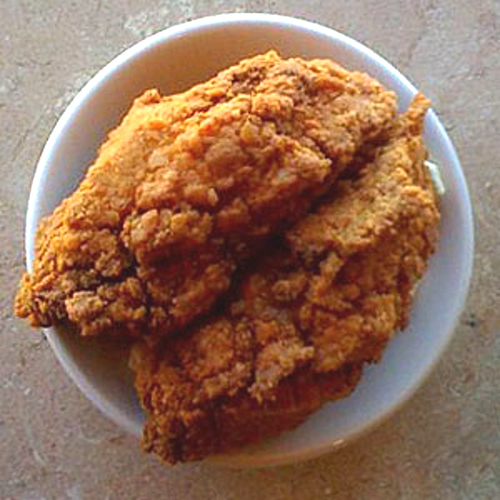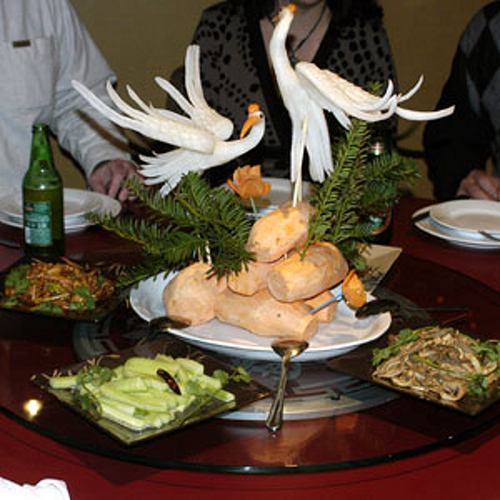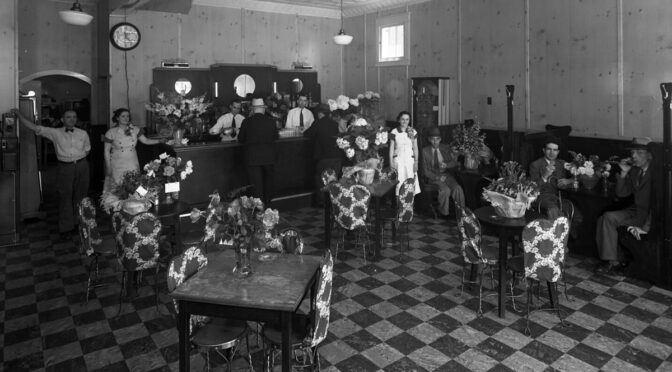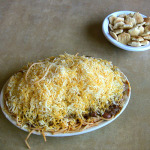By Robin Garr
LouisvilleHotBytes.com
Every year at Derby time, restaurant nostalgia sets in. Along with all the chatter about horses, track conditions, and betting odds, food-loving locals can’t resist reminiscing about all the beloved restaurants that aren’t around any more.
The specifics, of course, depend on your age and disposable income. Depending on your generation, for example, you might fondly recall the pleasures of Bauer’s 1870, La Paloma, Azalea, … and all of those were in the same historic building that, demolished and replaced with a large cubical structure, now houses Mesh.
It’s hard to imagine one of those conversations without invoking the names of Hasenour’s, Casa Grisanti, The Old House, Deitrich’s. We mourn Lilly’s, Cafe Metro, Gasthaus, Decca and Rye and many more of more recent passing; maybe even Leo’s Hideaway or Stebbins Cafe if you’re hanging on from the Greatest Generation.
I confess. I’m as guilty as everyone else. I fall victim to the nostalgia bug and write some variation of this evergreen story just about every year after Derby.
But here’s a wrinkle for 2024: This time around, aided by the usual throng of social media crowd-sourcers, let’s talk about some of the places we liked a lot but are mostly forgotten now, loved in their time but gone without leaving much of a trace.
Now I’m peering into a time-machine telescope to spot memories of some of my best food memories of Louisville in the ‘60s. So many of them are Italian: Imorde’s, a classic Italian deli on Third near Ormsby. The original Calandrino’s in the Highlands, where Mom got us our first pizza and introduced it as “a new kind of food.” Highland Italian, a short-lived place that preceded Lentini’s on Bardstown Road. They made a captivating shallow-dish Sicilian pie, loaded with fennel and oregano and other flavors that were unknown to anyone in Louisville at the time who didn’t have at least a little Italian in the family tree.

I remember the fun of being a young adult when the Louisville dining renaissance really started in the ‘70s. Bim Deitrich and Tim Barnes turned the popular Cherokee Triangle diner Myra’s into fancy Formally Myra’s. Then came the Bristol. The old, long-shuttered Jack Fry’s saloon (pictured at the top of the page in a 1938 photo) transformed into upscale Mexican Por Que No, then later returned the Fry’s moniker as another upscale bistro.
There was Chico’s in Hikes Point, really authentic, fiery New Mexico Mexican that soon got dumbed down to meet local tastes. Ah, memories. Boston Fishmarket in St. Matthews, a great all-you-can-eat seafood buffet. Then there was the excitement that surrounded the first local regional Chinese cuisines, Sichuan and Hunan, The Empress of China, Henny Woo’s and Phoenix Dragon and more. They built on, without replacing, our love for the Cantonese-American joys of Hoe Kow, Oriental House, and Chen’s. So many more came, and many left, most notably the still mourned Red Pepper Chinese.

In the ‘80s, Sachicoma gave us our first taste of sushi and other Japanese cuisine; and in the ‘90s, Vietnam Kitchen – happily still with us – introduced us to serious Southeast Asian fare. Thai, Indian, Korean … the list goes on and on, and aren’t we glad?
It wasn’t all about restaurants either. It was exciting to see our food culture starting to grow in the ‘70s. J.B.’s Larder in St. Matthew’s, and then Lotsa Pasta’s first shop on Bardstown at Wrocklage made us happy, bringing in goodies that until then we had needed to go to NYC or Chicago or even Cincinnati to acquire. The city’s first bagels came to a shop in Hikes Point whose name I can no longer remember around that same time. Anyone?
J.B.s (backed, I believe, by Jim Booher of the Chevy dealership that bore his name) brought the revelation of our first locally fresh-baked croissants. One memorable day a kid sent out to update J.B’s movable-letter sign, having no idea what they were, had it advertising “CROSS ANTS” for a full day before somebody noticed.
We started learning about real wine, too, not Ripple or Annie Green Springs, when we traveled over the bridge to hit Cut-Rate Liquors in Jeffersonville, where they had the real deal, pricey French and Italian choices at $5 per bottle. And then we watched with joy as fine wine shops finally started opening up on the Louisville side, legally selling on Sundays, too!
All this made us happy, but as we know too well, there’s a dark side to the restaurant business too: Restaurants operate on narrow margins, and a post-pandemic time of rising food and labor costs makes it tighter than ever.
The conventional wisdom that 90% of new restaurants fail within their first year is a myth, but backing a friend’s eatery can still be a risky investment. According to BinWise, a beverage management platform for the beverage industry, approximately 60% of restaurants fail within the first year of operation and 80% fail within the first five years. “These numbers may seem off-putting,” BinWise reports. But, looking on the bright side, it adds, “but the remaining 20% of restaurants go on to find long-term growth and success.”
Oh-kay, then! Looking over my own files, that guesstimate feels pretty close. Of ten top romantic dining rooms I listed for a Valentine’s Day column in 2006, just four remain in anything like their prior form: 610 Magnolia, Le Relais, 211 Clover, and Buck’s.
The more things change, the philosopher said, the more they stay the same. Maybe. But I’d still be mighty happy to be able to drop in on Imorde’s again for a bowl of spaghetti with marinara sauce, or hit Mazzoni’s for a rolled oyster. I miss The Winery, the Blind Pig, Sixth Avenue, Steam, Fire & Ice, Club Grotto, or … well, name your own favorite. We’ve got thousands of happy memories to choose from.




